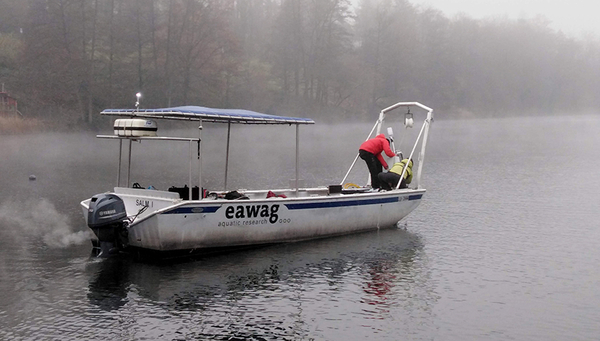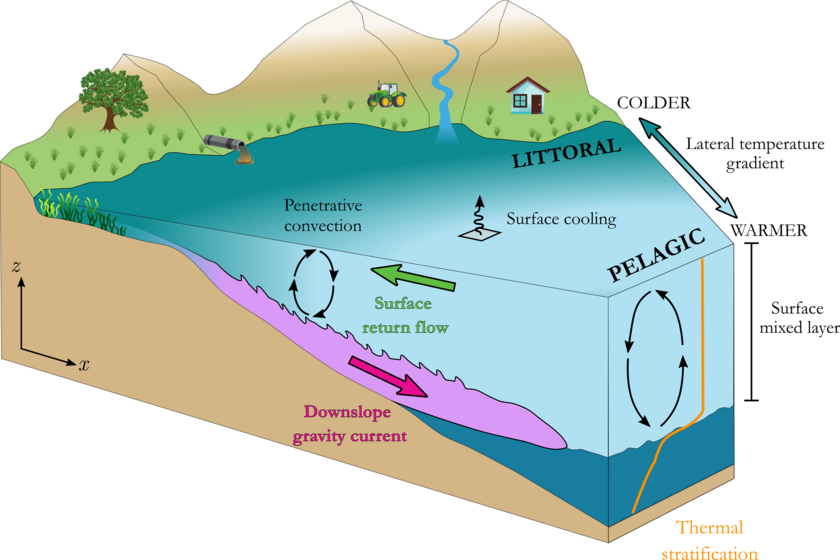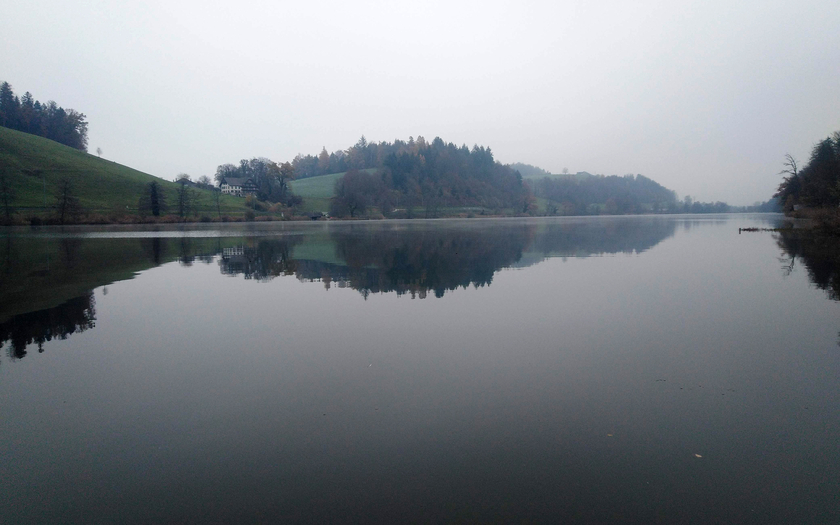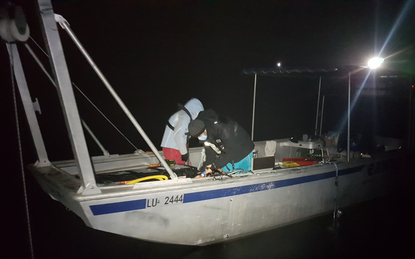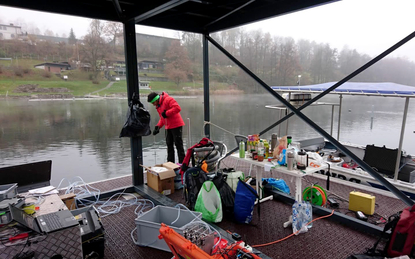News Detail
How gases travel laterally through a lake
January 25, 2024 |
The lake shore is directly affected by human activities: people swim and fish, river water enters the lake and wastewater can discharge pollutants. Until now, it was commonly assumed that a compound released at the shore is distributed slowly across the lake and breaks down at the same time, so that in the end it is only concentrated weakly and is barely detectable in deep lake water. “In our project, we show that this is by no means always true,” says Tomy Doda, a scientist from the Aquatic Physics group of Damien Bouffard at Eawag and lead author of the study: “If there is a current connecting the shore region with the middle of the lake, the compound is transported much faster and doesn’t have time to dilute and disintegrate completely before it reaches the deeper lake region.”
In the case of a pollutant, this can have negative consequences for the lake ecosystem. However, it can also be beneficial, for example, if such a current supplies fish with oxygen. “The most important result of our work is that the conventional idea that the shore region and the middle of the lake are disconnected from each other needs to be changed," says Doda.
Cooling drives currents
In the technical terminology, researchers refer to the shore zone of a lake as littoral and the region far from the shore as pelagic. A current that connects littoral and pelagic regions together can be caused by wind, for example. In their study, however, Doda and his colleagues investigated a completely different process. This is driven by the cooling of the lake surface during the night or on cold winter days, when the air is colder than the lake water. The colder water on the surface is denser and therefore sinks. This creates some mixing, which is called convection.
“Something else is also happening that is of particular interest to us,” says Doda: “As the lake is shallower near the shore, the water cools down much faster there than in the middle of the lake.” As a result, all the water near the shore becomes denser and plunges along the lake bed towards the middle like an underwater cascade. At the surface, this triggers a current in the opposite direction, which balances out the flow at the bottom of the lake.
Although it has been known for some time that this process, called cross-shore convective circulation or thermal siphon, exists, it has never been unequivocally investigated whether it can transport substances away from the shore. “This is exactly what we did in our study,” explains Doda: “We looked at gases but it would also be interesting to investigate the fate of other substances such as nutrients or pollutants for instance. We chose gases because they have a lot of consequences for the ecosystem.” Oxygen, for example, is vital for many organisms. And in climate research, attempts are being made to quantify emissions of greenhouse gases from lakes.
Experiments on Lake Rotsee
The Eawag researchers chose Lake Rotsee near Lucerne for their measurements because it is well protected from wind, which is also appreciated by rowers during the international regattas that are often held there. The research team spent two cold days and nights on the lake in November, installing sensors on the lake bed to measure the speed and temperature of the water and taking measurements from a platform and a boat.
To find out whether gas is actually transported through the thermal siphon, the researchers first used the noble gas krypton, which they injected into the lake in the littoral region. With their measurements at various locations, they were able to show that the noble gas travelled from the littoral to the pelagic with the current. To detect the gas, the team used a portable mass spectrometer developed by the Eawag spin-off Gasometrix GmbH for such studies.
The measurements on Lake Rotsee were carried out continuously during day and night, for 48 hours in November. The researchers worked in shifts. (Photos: left: Damien Bouffard, Eawag; right: Guillaume Cunillera, EPFL)
In a second step, Doda’s team tracked the naturally occurring oxygen. At the time of the measurements, this gas had a higher concentration in the shore region than in the middle of the lake. “It should therefore behave similarly to the injected krypton,” explains the scientist: “We carried out the same measurements and were able to show that the current also transported the oxygen into the pelagic region.” The last gas the group analysed was methane. Its concentration was higher in the middle of the lake than in the shore region. And indeed, measurements at various points showed that methane was transported in the opposite direction at the surface, from the pelagic to the littoral region.
The speed at which the gases moved was also particularly interesting. “This transport is ten times faster than what you would expect if you didn’t include this flow,” says Doda: “We therefore believe that this process needs to be taken into account in future studies.”
Video 24-hour measurement campaign on the Rotsee
Video Lake surface cooling drives littoral-pelagic exchange of dissolved gases (Science Advances paper)
Cover picture: On a boat and a platform in Lake Rotsee, the Eawag research group carried out extensive measurements on the transport of gases in lake water (Photo: Tomy Doda, Eawag).
Originalpublication
Partners
- Eawag
- Université de Lausanne
- Universidad de Granada, Spanien
- University of Pennsylvania, US

